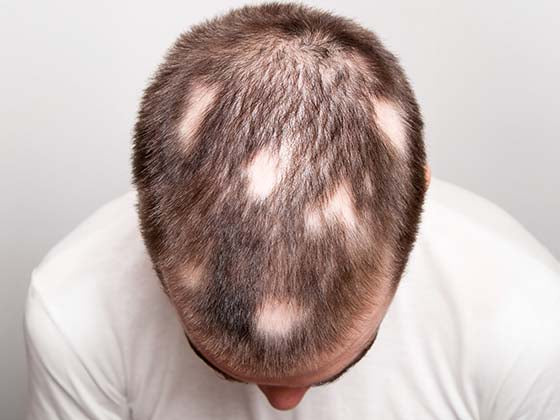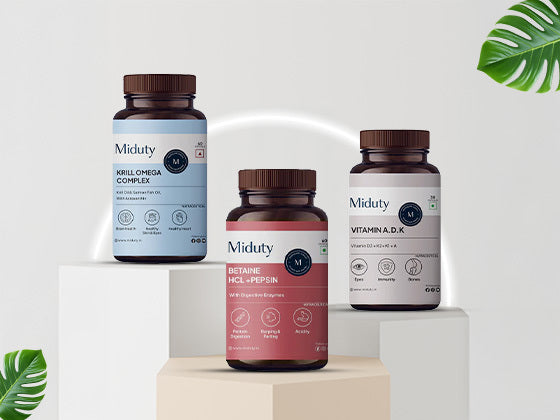Exfoliating your legs is a great approach to getting silky smooth skin since it removes dead skin cells, unclogs pores, and increases cell turnover. This blog is an expert's advice on exfoliating your legs properly.
Understanding Leg Exfoliation

Leg exfoliation is an effective skincare technique that can improve skin texture, reduce ingrown hairs, and improve the overall appearance of your legs. Understanding the goal, methods, and best practices of leg exfoliation allows you to implement this beneficial procedure into your skincare routine to get smoother, healthier-looking legs. To achieve the best results, customize your exfoliating program to your skin's specific needs and preferences.
Why Exfoliation Is Key to Smooth Legs

Exfoliation is essential for obtaining smooth legs because it removes dead skin cells, clears pores, and promotes cell turnover, resulting in softer, more vibrant skin. Here are numerous reasons why exfoliating is important for smooth legs:
-
Removes Dead Skin Cells: As time passes, dead skin cells build on the skin's surface, causing roughness, dryness, and uneven texture. Exfoliation helps to remove dead cells, revealing smoother skin underneath.
-
Prevents Ingrown Hairs: Regular exfoliation can help prevent ingrown hairs by removing debris and dead skin that can clog hair follicles. This permits hair to grow more freely without becoming stuck beneath the skin's surface.
-
Improves Skin Texture: Exfoliation improves skin texture by boosting cell turnover, which stimulates the creation of new, healthy skin cells. This helps to improve the skin's texture and minimizes the appearance of pimples or rough patches.
-
Unclogs Pores: Exfoliation unclogs pores by removing dirt, oil, and impurities, preventing them from becoming clogged and causing blackheads or breakouts.
-
Improves Absorption of Skincare Products: Exfoliating before applying moisturizers or treatments allows these products to penetrate deeper into the skin, hence increasing their effectiveness.
-
Stimulates Circulation: Exfoliating can increase blood flow to the skin's surface, generating a healthy shine and improving overall skin health.
-
Helps Even Skin Tone: Regular exfoliation can help to reduce dark spots, hyperpigmentation, and scarring by increasing the turnover of pigmented skin cells, revealing fresh, more even-toned skin.
-
Reduces Roughness and Dryness: Exfoliation smoothes and softens dry, flaky skin on the legs, leaving them feeling silky and nourished.
-
Promotes a Youthful Appearance: Exfoliation promotes a more youthful appearance by promoting collagen formation and reducing the appearance of fine lines and wrinkles.
Choosing the Right Exfoliation Method: Chemical vs Mechanical

Choosing the best exfoliating method for your skin type and issues is important for having smooth and healthy-looking legs. There are two sorts of exfoliation methods: chemical exfoliation and mechanical (or physical) exfoliation. Here's a comparison to help you decide which strategy is right for you:
1. Chemical Exfoliation:
-
Chemical exfoliation involves using acids or enzymes to dissolve dead skin cells and promote cell turnover.
-
Chemical exfoliants are classified into two types: alpha hydroxy acids (AHAs) and beta hydroxy acids (BHAs).
-
Chemical exfoliation is gentle on the skin, making it ideal for those with sensitive or easily irritated skin. It can address specific skin issues like acne, uneven skin tone, and fine wrinkles. It stimulates collagen formation and skin rejuvenation.
-
Chemical exfoliation is suitable for people who have sensitive skin, or acne-prone skin or want to treat specific skincare issues like hyperpigmentation or signs of aging.
2. Mechanical (Physical) Exfoliation:
-
Mechanical exfoliation is the process of manually scraping the skin with abrasive particles or instruments to remove dead cells.
-
Mechanical exfoliants include body scrubs, exfoliating gloves, and brushes.
-
The benefits of mechanical exfoliation include rapid effects from physically removing dead skin cells and displaying smoother skin. It improves circulation and promotes lymphatic drainage. It can be adjusted depending on the amount of scrubbing and the type of exfoliating product used.
-
Mechanical exfoliation is ideal for people who enjoy a tactile exfoliating sensation and have thicker, non-sensitive skin. It is good at removing surface pollutants and improving skin texture.
Essential Tools and Products for Effective Exfoliation
To get smooth, luminous skin on your legs through effective exfoliation, you must use the correct tools and products. Whether you prefer chemical or mechanical exfoliation, having the right tools and products can significantly improve your skincare routine. Here are the necessary tools and supplies for efficient exfoliation.
1. Chemical Exfoliation Products:
-
Select a body lotion with glycolic acid, an alpha hydroxy acid (AHA) that gently exfoliates and smoothes the skin's texture. Look for formulas that are specifically intended for body use.
-
Choose a body wash with salicylic acid, a beta hydroxy acid (BHA) recognized for penetrating pores and preventing acne and ingrown hairs. This is perfect for oily, acne-prone skin.
-
Pre-soaked pads or wipes with AHAs or BHAs make chemical exfoliation easier. Swipe them over your legs after cleansing for a quick and efficient exfoliant.
-
Consider utilizing enzyme-based exfoliation masks containing fruit enzymes (e.g., papaya, pineapple) to gently dissolve dead skin cells and reveal softer skin.
2. Mechanical Exfoliation Tools:
-
Choose a body scrub with natural exfoliating particles such as sugar, salt, coffee grounds, or apricot kernels. These physical exfoliants help buff away dead skin cells and promote circulation.
-
Textured gloves or mitts made from materials like nylon or natural fibers (e.g., sisal) provide manual exfoliation. Use them with your favorite body wash or scrub to enhance exfoliation and stimulate the skin.
-
A dry brush with natural bristles can be used for dry exfoliation before showering. Brush in gentle circular motions towards the heart to slough off dead skin cells and improve circulation.
-
Some electronic devices, such as body brushes or exfoliating devices, offer motorized exfoliation to enhance skin texture and remove dead skin cells effectively.
3. Additional Exfoliation Accessories:
-
Use a pumice stone to smooth rough areas like heels and elbows. Soak your feet in warm water first to soften the skin, then gently rub the pumice stone in circular motions.
-
For thickened skin or calluses on the feet, use a foot file or callus remover to gently remove dead skin and reveal softer, smoother feet.
Step-by-Step Guide to Exfoliating Legs

Exfoliating your legs is an effective approach to obtain smooth, glowing skin. Here's a step-by-step instruction to properly exfoliate your legs:
-
Step 1: Gather your supplies. Before you begin, gather all of the tools you'll need for exfoliating your legs: body scrub (containing exfoliating particles such as sugar, salt, or coffee grounds), exfoliating gloves, mitt, or loofah, body wash or cleanser, towel, and moisturizer.
-
Step 2: Prepare your skin. Begin by having a warm shower or bath to soften your skin and open your pores. This makes exfoliating more effective.
-
Step 3: Clean Your Skin Use your favorite body wash or cleanser to gently cleanse your legs of dirt, perspiration, and pollutants. Rinse well with warm water.
-
Step 4: Apply the Body Scrub. Take a liberal amount of body scrub in your hand and rub it into your legs. You can also use the scrub directly on your exfoliating gloves, mitt, or loofah.
-
Step 5: Use your hands or the exfoliating tool to gently massage the scrub into your legs in circular strokes. Focus on rougher areas, such as the knees, ankles, and thighs. Scrubbing too hard is not recommended, particularly if you have sensitive skin.
-
Step 6: After fully exfoliating your legs, rinse with warm water to remove the scrub. To avoid irritation, make sure to thoroughly remove all residues of the scrub.
-
Step 7: Gently pat your legs dry with a soft towel. Avoid rubbing vigorously, as freshly exfoliated skin can be more sensitive.
-
Step 8: Immediately after drying off, apply a rich moisturizer to your legs. This helps lock in moisture and keeps your skin hydrated and smooth.
-
Step 9: For best results, exfoliate your legs 1-2 times per week, depending on your skin type and sensitivity. Over-exfoliating can irritate, so listen to your skin's needs.
Preparing Your Skin for Exfoliation

Preparing your skin properly before exfoliation is important for achieving effective and safe results. Preparing your skin maximizes the benefits of exfoliation while reducing the chance of irritation or harm. Here are some crucial things to take when prepping your skin for exfoliation:
-
Before exfoliating, start with clean skin to remove any dirt, oil, or impurities that can interfere with the exfoliation process. Use a gentle cleanser suitable for your skin type and rinse thoroughly with lukewarm water. Pat your skin dry with a towel, leaving it slightly damp for optimal exfoliation.
-
Taking a warm shower or bath before exfoliation is beneficial as it helps to soften the skin and open up the pores. Warm water also improves blood circulation, making exfoliation more effective. Avoid using hot water, as it can strip the skin of its natural oils and cause dryness.
-
For deeper pore cleansing and skin softening, consider steaming your skin before exfoliation. You can do this by leaning over a bowl of hot water with a towel draped over your head to trap the steam. Steaming helps to loosen debris and dead skin cells, preparing your skin for exfoliation.
-
If you're using a new exfoliating product or method, it's important to perform a patch test on a small area of your skin first. Apply a small amount of the product to your inner arm or behind your ear and wait for 24 hours to check for any adverse reactions such as redness, irritation, or itching.
-
Consider your skin type and sensitivity level when choosing an exfoliation method. If you have sensitive skin, opt for gentle exfoliants with finer particles or chemical exfoliants like AHAs (alpha hydroxy acids) or BHAs (beta hydroxy acids) that are milder on the skin.
-
Refrain from using harsh scrubs, brushes, or treatments that can cause excessive irritation or damage to your skin. Abrasive materials like crushed walnut shells or coarse sugar can be too harsh, especially for sensitive skin types.
-
Before exfoliating, ensure that your skin is adequately hydrated. Apply a lightweight moisturizer or hydrating serum to prevent excessive dryness post-exfoliation. Hydrated skin is more resilient and less prone to irritation during exfoliation.
-
Exfoliate your skin at the right time and frequency based on your skin's needs. Over-exfoliation can lead to irritation and compromise your skin's barrier function. Aim to exfoliate 1-3 times per week, depending on your skin type and the chosen exfoliation method.
-
After exfoliating, it's important to protect your skin from sun exposure by applying sunscreen. Exfoliation can increase skin sensitivity to UV rays, so wearing sunscreen helps prevent sunburn and premature aging.
How to Safely Exfoliate Your Legs at Home

Exfoliating your legs at home is an effective approach to obtain smooth, glowing skin. However, it is critical to do so carefully to avoid irritation or harm. Here's a step-by-step method for gently exfoliating your legs at home.
-
Choose the Right Exfoliant: Select a gentle exfoliant that is appropriate for your skin type. If you prefer a non-abrasive choice, look for products with fine exfoliating particles such as sugar, salt, or jojoba beads.
-
Prepare Your Skin: Before you begin, take a warm shower or bath to soften your skin and open your pores. This will increase the effectiveness of exfoliation while decreasing the likelihood of irritation.
-
Gently exfoliate: Apply the exfoliant to your moist legs. Massage the exfoliant into your skin in gentle, circular motions, focusing on the knees, ankles, and thighs. Scrubbing too hard is not recommended, particularly if you have sensitive skin.
-
Rinse thoroughly: With lukewarm water, remove any traces of the exfoliant from your skin.
-
Pat Dry: Using a soft towel, gently dry your legs. Rub gently, since freshly exfoliated skin may be more sensitive.
-
Moisturize Immediately: Apply a heavy, moisturizing moisturizer to your legs right after exfoliating. This helps to retain moisture and keep your skin soft and supple.
-
Avoid Over-Exfoliation: Exfoliate your legs 1-3 times a week, depending on your skin type and sensitivity. Over-exfoliation can irritate and weaken your skin's barrier.
-
Exercise Caution When Using Physical Exfoliants: To avoid hurting your skin, choose a physical scrub (such as a sugar scrub) with fine particles. Avoid using strong scrubs with big, jagged particles that might create microtears in the skin.
-
Listen to your skin: Pay attention to how your skin reacts to exfoliating. If you feel redness, irritation, or discomfort, lower the frequency of exfoliation or use a gentler exfoliant.
-
Protect Your Skin: Use sunscreen on your legs, especially if you exfoliate during the day. Exfoliation can make your skin more sensitive to the sun, so wear sunscreen to protect it from UV damage.
Aftercare: Moisturizing and Protecting Your Skin
Following any skin treatment or surgery, aftercare is important to ensure that the skin heals properly and remains healthy. Moisturizing and preserving the skin are essential components of an effective aftercare routine. Here's how you can tackle it: use a mild cleanser, apply moisturizer, avoid harsh products, guard from sun exposure, stay hydrated, avoid touching or picking, follow particular directions, consider skin-soothing ingredients, be patient, and seek professional advice. Consistency is essential in skincare aftercare. By sticking to a mild and protective routine, you can encourage healing, avoid issues, and keep your skin looking great.
Professional Insights and Tips

Professional skincare ideas and advice can be quite useful for preserving healthy, bright skin. Below are some professional recommendations:
-
Customize Your Routine: Work with a dermatologist or skincare specialist to develop a skin care regimen specific to your skin type, issues, and goals. What works for someone else may not be suitable for you.
-
Consistency is Key: Establish a consistent skincare regimen with products that target your unique requirements, such as hydration, anti-aging, or acne management. To achieve the best benefits, use these products regularly.
-
Understand substances: Familiarise yourself with skincare substances and their advantages. Look for important elements like hyaluronic acid to hydrate, vitamin C to brighten, and retinoids to prevent aging. Be wary of potential allergens or irritants based on your skin sensitivity.
-
Layer Products Correctly: Apply skin care products in the proper order for optimal efficacy. In general, begin with the thinnest consistency (serums) and progress to the thickest (creams or oils).
-
Monitor Sun Exposure: To defend against UV damage and accelerated aging, wear sunscreen every day, even on cloudy days or inside. If you spend time outside, reapply sunscreen every several hours.
-
Balance Cleansing: Avoid over-cleansing, which can deplete the skin's natural oils and cause dryness or irritation. Use a gentle cleanser that is appropriate for your skin type, and consider double cleaning if you use makeup or sunscreen.
-
Exfoliate: Exfoliation removes dead skin cells and promotes cell turnover, but too much exfoliation can cause discomfort. Use light exfoliants once or twice a week, and avoid strong scrubs if you have sensitive skin.
-
Hydrate Internally: Drink plenty of water all day to keep your skin moisturized from within. Maintaining skin elasticity and general health requires adequate hydration.
-
Get Enough Sleep: Proper sleep is essential for skin renewal and healing. Aim for 7-9 hours of sleep per night to maintain good skin health.
-
Listen to Your Skin: Pay attention to how your skin reacts to various products and modify your routine accordingly. If you detect persistent problems or unexpected changes, consult a skincare professional.
-
Consider Professional Treatments: Depending on your skin conditions, look into professional treatments such as facials, chemical peels, or laser therapy performed by licensed estheticians or dermatologists.
-
Be patient: Skincare results require time. Maintain your routine consistently and be patient while you wait for improvements in skin texture, tone, and general appearance.
Dermatologists' Advice on Leg Exfoliation
Exfoliating your legs properly can help eliminate dead skin cells, smooth rough spots, and promote healthier-looking skin. Dermatologists recommend the following steps for leg exfoliation: choose the right exfoliant, consider physical exfoliation, exfoliate regularly, prep your skin, apply gently, rinse thoroughly, moisturize immediately, avoid sun exposure, be gentle with razor use, listen to your skin, and consult a dermatologist. Following these dermatologist-approved tips will help you attain smoother, healthier-looking legs without creating extra irritation or skin damage.
Common Mistakes to Avoid During Exfoliation

Exfoliation is a useful skincare process, but it must be performed carefully to prevent potential pitfalls that might cause irritation or skin damage. Here are some typical mistakes to avoid while exfoliating.
-
Over-Exfoliation: One of the most prevalent faults is exfoliating too often or harshly. Over-exfoliation can deplete the skin's natural oils, damage its barrier function, and cause increased sensitivity, redness, and dryness. Exfoliate once or twice a week, depending on your skin type and product.
-
Using Harsh Physical Scrubs: Avoid using harsh physical scrubs that contain big, abrasive particles such as nut shells or apricot kernels. These can cause microscopic tears in the skin, causing discomfort and inflammation. Choose milder exfoliants with fine particles or chemical exfoliants with AHAs or BHAs.
-
Ignoring Skin Type: Not every exfoliation is appropriate for all skin types. If you have sensitive or acne-prone skin, strong exfoliants can exacerbate the problem. To minimize irritation, choose exfoliating solutions that are particularly designed for your skin type.
-
Exfoliating Dry Skin: Exfoliating dry, flaky skin without adequate hydration or preparation might exacerbate the issue. Before exfoliating, always moisturize and hydrate your skin to soften it and make the exfoliation more effective and gentle.
-
Skip Patch Tests: Before using a new exfoliation product, conduct a patch test on a small area of your skin to check for any adverse reactions or allergies. This can help to avoid unexpected irritation or outbreaks.
-
Exfoliating Broken or Irritated Skin: Do not exfoliate areas with cuts, sores, sunburn, or other skin irritations. Exfoliating injured skin can slow healing and raise the risk of infection.
-
Not Following directions: Each exfoliating product may come with specific usage directions, such as application time and frequency. To maximize advantages while minimizing hazards, always read and follow the manufacturer's directions.
-
Forgetting Sunscreen: Exfoliating might leave your skin more susceptible to sunlight. Use sunscreen every day, especially after exfoliating, to protect your skin from UV damage and reduce the risk of sunburn and hyperpigmentation.
-
Using Exfoliants in Specific Areas: Some areas of your body, such as the face, neck, and chest, may be more sensitive than others. Use softer exfoliants on these areas, and avoid abrasive scrapes or chemical exfoliants near sensitive areas such as the eyes.
-
Neglecting Moisturization: After exfoliation, always apply a moisturizer to replenish lost hydration and assist rebuild the skin barrier. Moisturizing can also relieve any minor irritation caused by exfoliation.
Addressing Skin Concerns with Targeted Exfoliation Techniques
Targeted exfoliation treatments, which focus on specific regions or use specialized technologies, can be quite helpful in treating certain skin issues. Here's how to handle common skin issues using focused exfoliating techniques:
-
Acne-Prone Skin: Use a light chemical exfoliator, such as salicylic acid (a BHA), to infiltrate the pores and remove excess oil and dead skin cells that can cause acne. It focuses on the T-zone (forehead, nose, and chin), which is prone to breakouts. Exfoliate 2-3 times each week to avoid clogged pores and breakouts without overdrying your skin.
-
Dull Skin and Uneven Texture: Exfoliants containing glycolic or lactic acid (AHAs) will increase cell turnover and reveal smoother, brighter skin. Apply evenly to the face and neck to enhance overall texture and brightness. Exfoliate 1-2 times per week to retain a healthy glow and improve skin clarity.
-
Hyperpigmentation and Dark Spots: To erase dark spots and even out skin tone, combine chemical exfoliation (using AHAs or BHAs) with physical exfoliation (soft scrubbing). It focuses on hyperpigmented areas, such as sunburned skin or acne scars. Exfoliate 2-3 times each week to promote skin cell renewal and eventually reduce pigmentation.
-
Dry, Flaky Skin: Prioritize mild exfoliation to remove dry, dead skin cells without causing more irritation. It uses a moisturizing scrub or an enzymatic exfoliant to target rough areas such as elbows, knees, and heels. Exfoliate once or twice a week, followed by a thick moisturizer to replenish lost water and soothe the skin.
-
Fine Lines and Wrinkles: Use retinol based exfoliants or light chemical peels to boost collagen production and reduce fine wrinkles. Apply to wrinkle-prone regions, such as around the eyes and lips. Consult a dermatologist to get personalized advice on exfoliation frequency and products based on your skin's tolerance.
-
Sensitive Skin: To avoid irritation, use ultra-gentle exfoliants such as oatmeal scrubs or enzyme masks. It takes extra precautions in sensitive areas, avoiding harsh exfoliating processes. Exfoliate no more than once a week to reduce unwanted responses while still getting better skin.
-
Ingrown Hairs: To prevent ingrown hairs, use chemical exfoliants such as salicylic or glycolic acid, which remove dead skin and debris from hair follicles. It focuses on regions prone to ingrown hairs, such as the bikini line or the legs following shaving. Exfoliate 2-3 times each week to keep your skin smooth and bump-free.
Long-Term Care and Maintenance

Long-term skincare and maintenance require constant practices and healthy behaviors to maintain health, youthfulness, and overall attractiveness. Here are some key long-term skin care strategies: cleanse daily, moisturize frequently, use sunscreen daily, hydrate from within, eat a balanced diet, get enough sleep, manage stress, avoid smoking and alcohol, exercise regularly, protect against environmental factors, exfoliate weekly, avoid hot water and harsh products, and consult a dermatologist. By including these habits in your daily routine, you can ensure that your skin remains healthy and attractive for years to come. If you have specific skin concerns or conditions, consult a professional for personalized recommendations and treatment alternatives.
































